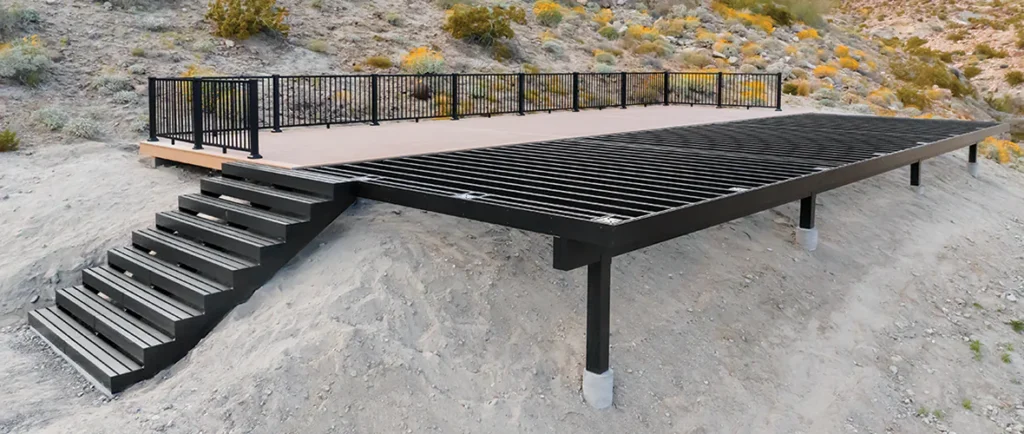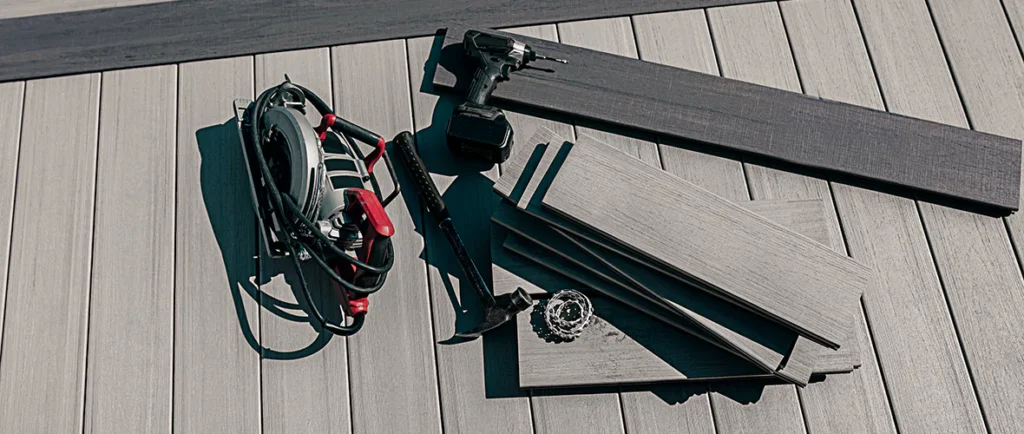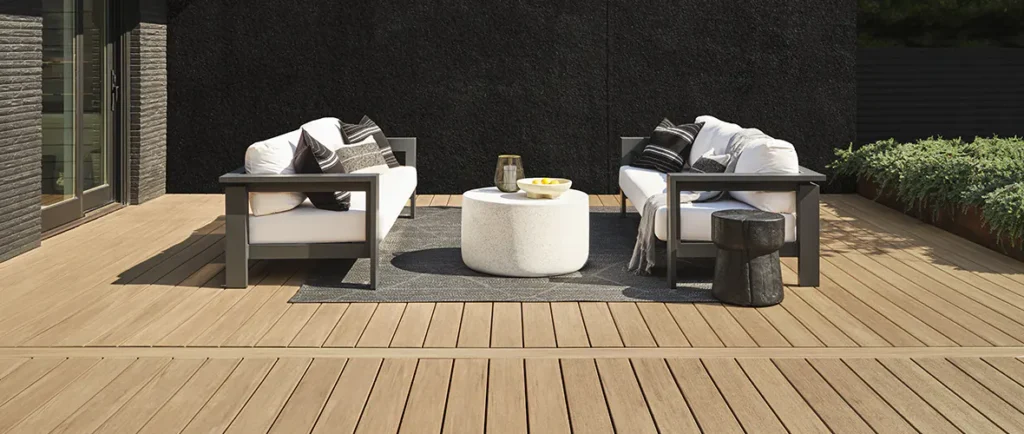When it comes to fire safety, particularly around your home, the language can feel surprisingly complicated. If you’re a homeowner weighing your options for a deck upgrade, you’ll quickly run into terms like fire-resistant decking, fireproof decking, non-combustible, and ignition-resistant decking. But what do they all mean? And more importantly, which ones should you prioritize? Let’s break it down so you can make educated decisions that help protect your home and your loved ones.
First, why does fire safety matter for decking?
Fire season is becoming longer and more intense in many regions, especially in areas prone to wildfires — and some homeowner favorites like grills and fire pits can also pose a risk. Along with roofs and siding, decks are often one of the most exposed parts of your home, making them vulnerable during high-risk fire events. By choosing the right fire-resistant decking materials, you not only help protect your property, but also provide peace of mind. Understanding these terms will help you make sense of the regulations and find a decking material that aligns with your goals.
Decoding fire-related terminology
To make the process a bit less overwhelming, let’s tackle some of the most common terms you’re likely to encounter when shopping for decking materials.
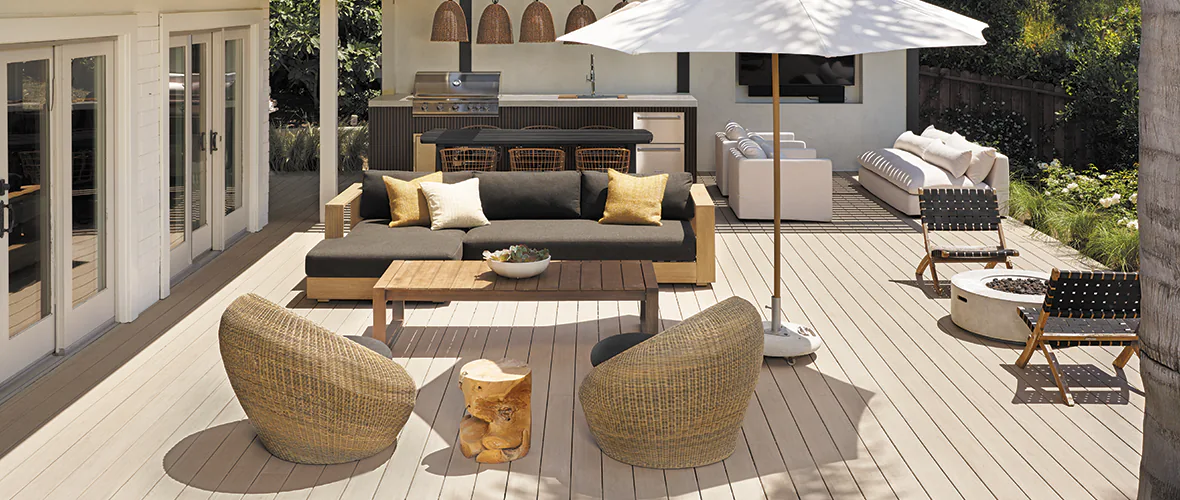
Fire-resistant decking
Think of fire-resistant decking as your first line of defense. These materials are designed to withstand some exposure to fire without quickly burning or igniting. While they’re not immune to fire, they’re a much smarter choice than untreated wood and many highly flammable composite options. It’s important to compare fire resistance ratings, too. While many decking brands offer Class B or C Flame Spread Ratings, TimberTech Advanced PVC Decking offers the best variety of options with a Class A Flame Spread Rating — the best available flame spread rating.
Fireproof Decking vs. Fire-Resistant Decking Materials
The term fireproof decking can be more of a marketing term than a factual one. Materials like concrete are fireproof; but, if you want decking that looks like wood, you’re not likely to find a fireproof option. When it comes to decking materials, some people might confuse “fireproof” with ”fire resistant” — meaning they resist flames but will still be affected under high enough temperatures.
Fire Rated Decking Materials
There is a lot of confusion between “fire rated” materials and “flame spread ratings” in that they are often used interchangeably, which is incorrect. The fire rated designations and flame spread rating are determined through the same testing. But while a flame spread rating measures only that, a fire rated designation also includes a measure of smoke — something important to interior materials, but not exteriors. So when it comes to decking materials, a Class A Flame Spread Rating is the top rating. It indicates that the material is highly resistant to flame spread, giving your home an extra layer of protection.
WUI Compliant
If you live in a WUI Zone, you likely live in a high fire-risk area and your building materials are required to be WUI Compliant. What that means can vary depending where you live — as some areas set higher standards for WUI Compliance, so it’s important to check with your local building codes. In any area, though, WUI Compliance sets the bare minimum standards for fire resistance. To improve the level of protection your decking materials offer, you’ll want to consider Flame Spread Rating and even ignition resistance when making your decision.
Non-combustible
Non-combustible materials will not burn at all. These materials provide the highest safety level, but it may come with fewer style options than other materials.
Ignition Resistant
Though the are capable of burning, ignition-resistant materials are specifically engineered to resist catching fire for a prolonged period, even when exposed to intense heat or flames. These materials are ideal for areas in direct wildfire danger.
Non-flammable
Similar to non-combustible, non-flammable materials do not ignite. Think of this term as a cousin to “non-combustible.” It’s worth noting that many materials will claim some degree of fire resistance, but it’s truly non-flammable or non-combustible products that are likely to meet rigorous safety standards.
Flame spread ratings
When decking materials have a Flame Spread Rating, it’s a good indication that they have been tested for fire resistance. But not all Flame Spread Ratings are equal — here’s how they break down:
Class A: This is the highest flame spread rating, meaning the material is highly effective at inhibiting flame spread.
Class B: Indicates a moderate level of flame spread resistance, meaning flames will spread more readily than Class A materials.
Class C: This rating indicates that the material has some flame spread resistance, but will spread flames more readily than Class A and B materials.
When shopping for composite decking materials, you’ll find many that have Class B or C Flame Spread Ratings — but TimberTech Advanced PVC has the most options with a Class A Flame Spread Rating.
Fire safety isn’t one-size-fits-all
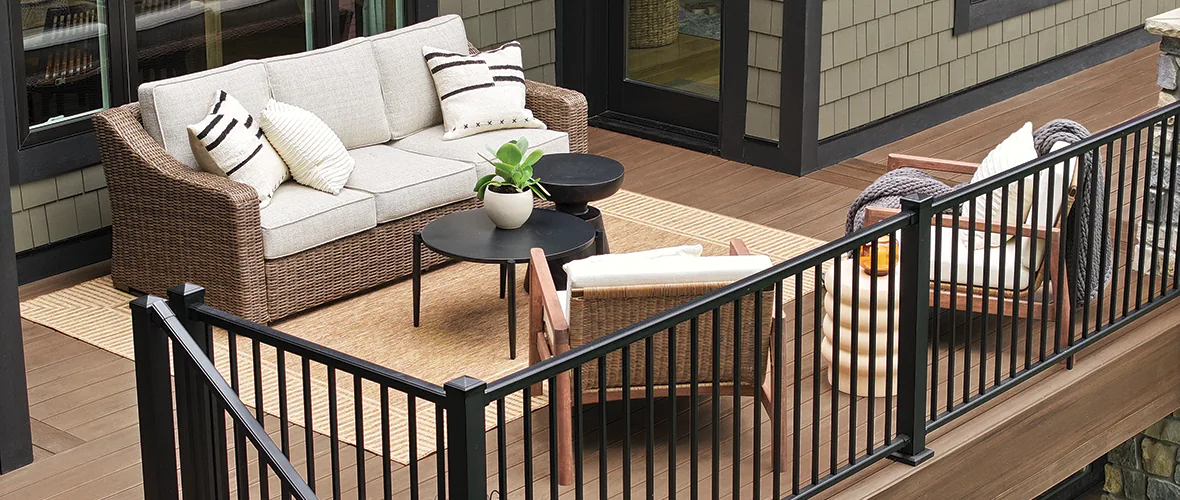
Your choice of decking isn’t just about finding something fire resistant. Working with fire-resistant decking materials doesn’t mean you have to sacrifice style or functionality — there are lots of options to match your style and meet the needs of your outdoor space. TimberTech Advanced PVC Decking offers two collections — Vintage and Landmark — that are not only WUI Compliant, but have a Class A Flame Spread Rating and an Ignition Resistant designation.
By making an informed choice and understanding the terms, you can enjoy your deck with confidence, knowing it adds beauty to your home while helping to protect it from the threat of fire. If you’re not sure where to start, talk with a local contractor or building professional who understands the regulations in your area.

